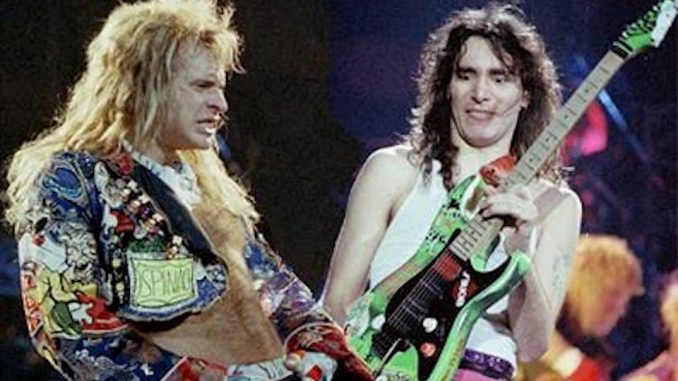
Steve Vai has always stood at the crossroads of precision and spectacle, a guitarist whose technical command made him a central figure in the rise of shredding. Looking back on his explosive mid 80s era, particularly his work with David Lee Roth, Vai recently reflected on how guitar culture was changing around him and how he found himself right at the heart of it.

“Shredding Was Becoming Popular, And I Was One Of Those Guys Who Just Practiced A Lot”
In the post-Van Halen guitar landscape, players everywhere were pushing boundaries. Musicians sought faster runs, wilder techniques, and the flashier end of fretboard expression. Vai, already a disciple of Frank Zappa’s demanding musicality, fit naturally into this rising wave.
“Shredding was becoming popular,” he recalled. “And I was one of those guys who just practiced a lot.”
To Vai, shred wasn’t a fad or a gimmick, it was the culmination of endless hours of disciplined woodshedding. His technical precision and deep musical vocabulary became the perfect fuel for the era’s guitar arms race. Instead of merely keeping up, he helped redefine the standard.
Joining David Lee Roth: The Perfect Storm Of Excess
When Vai joined David Lee Roth’s band after Eddie Van Halen’s departure from the solo lineup, it created one of the most electrifying combinations in rock. Roth, fresh from leaving Van Halen, sought nothing short of a supernova-level spectacle, something dazzling enough to match the band he’d stepped away from.
Vai delivered.
During the sessions for “Eat ’Em and Smile” and “Skyscraper,” he became the centerpiece of Roth’s musical extravagance. It was a period he now describes as “over-the-top rock indulgence.”
Massive production. Unrestrained showmanship. Riffs, solos, dives, taps, and whammy-bar screams that seemed to rewrite the vocabulary of 80s rock.
It wasn’t subtle, because it wasn’t meant to be.
This was an era defined by bright lights, impossible stage moves, skyscraper hair, and musicianship pushed past the red line. Vai fit the moment perfectly, elevating Roth’s band into a fireworks show of virtuosity.
A Guitarist Constantly Linked To Metal, Even When He Didn’t Identify as One
Despite Vai’s background being rooted more in fusion, compositional experimentation, and Zappa-style complexity, he has always been linked to metal. That association, he explains, came from the nature of his work:
- His high-velocity playing
- His harmonic adventurousness
- His association with high-profile rock and metal acts
- And the sheer aggression of his tone and technique
“Whether I thought of myself as a metal guy or not,” Vai said, “I guess everybody else did.”
But Vai never resisted the label. Instead, he embraced it as one flavor of a much broader artistic palette. His later solo work, Passion and Warfare, Sex & Religion, Real Illusions, further blurred lines between metal, art rock, and instrumental virtuosity, solidifying him as a genre-transcending innovator.
A Legacy Carved Into The Fretboard
Steve Vai’s era with David Lee Roth remains a landmark moment in guitar history, a perfect combination of timing, talent, and theatricality. As shredding began to dominate the musical landscape, Vai emerged not just as a participant but as one of its defining architects.
His reflections today carry the calm confidence of someone who has already proven everything he needed to prove:
He practiced harder than most.
He played wilder than most.
And he helped reshape rock guitar at a pivotal moment.
The “over-the-top indulgence” of his DLR years wasn’t excess for its own sake, it was the sound of a young virtuoso stepping into a spotlight he was born to own.
Four decades later, that spotlight still follows him.
Leave a Reply